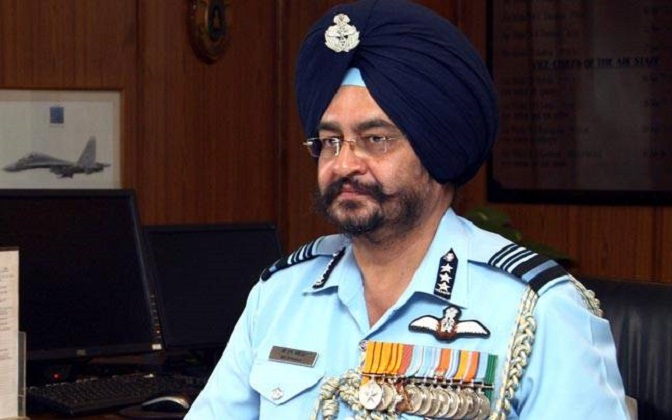
Air Chief Marshal B.S.Dhanoa said that the Indian Air Force is “very much alive” to face emerging threats that could arise in the Indo Pacific region. He also asserted that his force was prepared to deal with any challenge to protect India’s national interests.
He also expressed that there is cause for concern over the rate of modernization and induction of new equipment in India’s neighbourhood, even as India faces challenges originating from “unresolved territorial disputes” and “sponsored” non-state and transnational actors.
But the IAF is capable of, and is moving ahead, for countering them effectively he added.
“The IAF is well equipped to take on threats which occur from across the border, be it in the realm of sub-conventional or other domains,” the Air Chief Marshal said.
Referring to India’s immediate security challenges, without naming China and Pakistan, he said, “The current challenges emanate from unresolved territorial issues, sponsored non-state actors and transnational actors who act against national interests through the global commons.
Dhanoa also made an indirect reference to China’s rapid modernization of its air force and also about the infrastructure development Beijing has carried out in the Tibet Autonomous Region bordering India.
“The IAF is well equipped to take on challenges across the entire range of threats that could emanate across our borders.
While there is a cause for concern as regards to the rate of modernization and induction of new equipment in our neighbourhood, the IAF is nevertheless, moving ahead with appropriate measures to cater to these new developments,” he said.
Asked whether the IAF was capable of playing a role to expand India’s geo-political influence in the Indo-Pacific region, he replied in the affirmative and talked about IAF’s capabilities including having the second largest fleet of C-17s.
“We have the second largest fleet of C-17s in the world. Therefore, India will pull its heft in helping out friendly nations in times of human distress and humanitarian relief. In addition, the IAF is very much alive to the emerging threats that could arise in the Indo Pacific region,” he said.
At present, the IAF has a fleet of ten C-17 Globemasters, used for strategic airlift missions, transporting troops and cargo for long-range missions.
The US has been pushing for a greater role for India in the Indo-Pacific which is seen by many countries as an effort to contain China’s growing clout in the region.
In November last year, India, the US, Australia, and Japan gave shape to the long-pending “Quad” Coalition to develop a new strategy to keep the critical sea routes in the Indo-Pacific free of any influence.
On IAF’s ambitious modernization plan, the Chief of Air Staff said augmenting the fighter squadron strength was his top priority.
“To achieve this, the IAF is looking at new inductions and midlife upgrades. Towards this, MiG-29, Jaguar and Mirage-2000 aircraft are being upgraded in a phased manner in order to equip them with contemporary capabilities,” he said.
He also mentioned the planned induction of 83 Tejas light combat aircraft and 36 Rafale jets.
“Further, the case for 114 fighter aircraft is being processed under the Strategic Partnership model of DPP (Defence Procurement Procedure). Other options are also being explored to build up to authorized strength at the earliest,” he added.
The IAF has already started the process to procure a batch of 114 fighter jets. At present, the IAF has a total of 32 squadrons of fighter jets much below the authorized strength of 42 squadrons.
“The IAF is adopting a holistic approach in harnessing all available resources at its disposal to tackle emerging challenges in a collaborative and cohesive manner,” said the IAF chief.

Post Your Comments